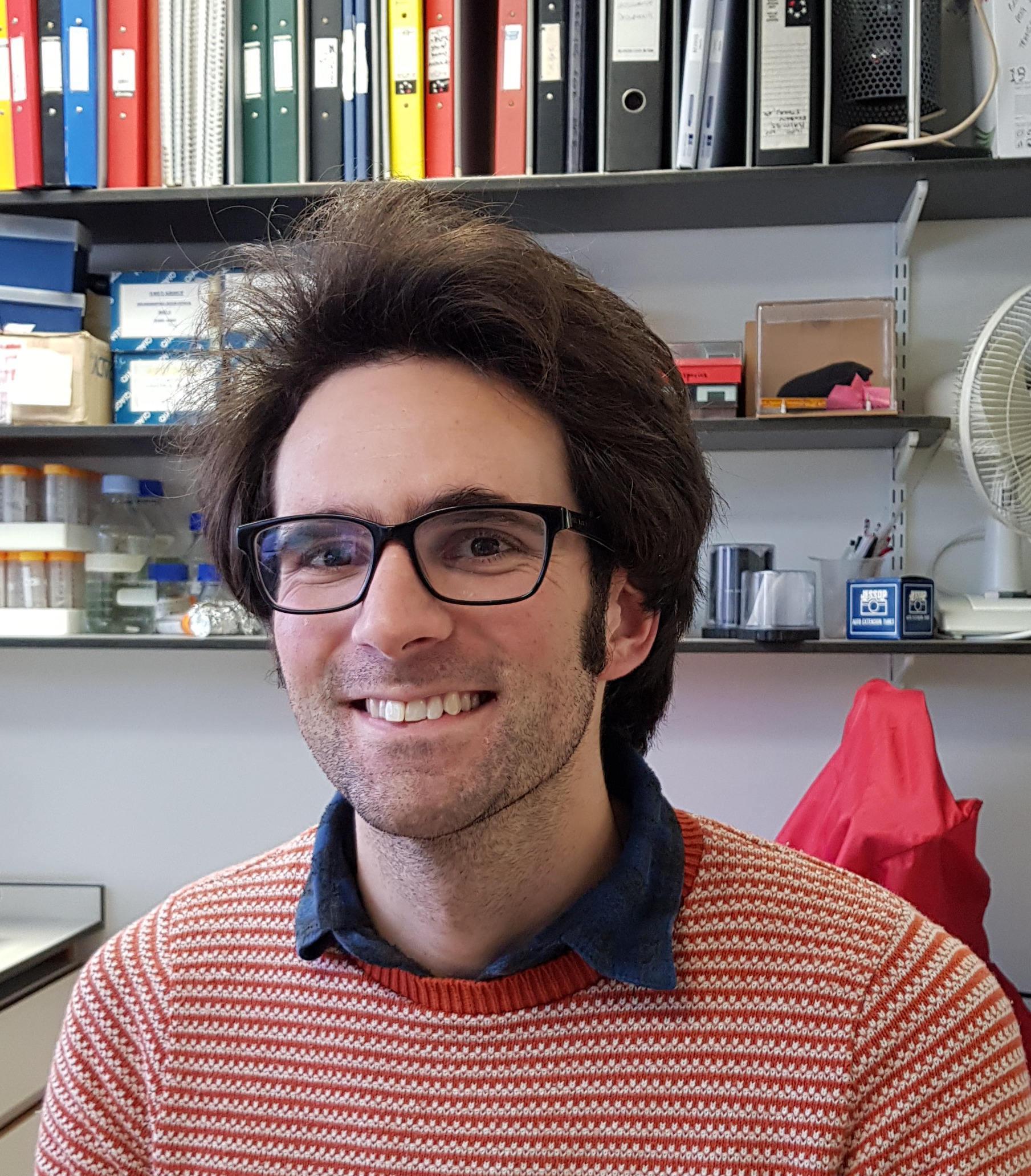Biography
I received my undergraduate degree in plant science from the University of Edinburgh (2010) followed by a PhD in plant development from the University of Cambridge (2014). During my PhD I worked in Jill Harrison’s lab (now at Bristol) to investigate the role of CLAVATA (CLV) genes in the moss Physcomitrella patens. Previously, CLV genes had been shown to regulate meristem function in flowering plants. Working with a great group of scientists I managed to show that CLV genes also control meristem function in moss and that their activity is crucial to pattern cell divisions in three dimensions to form the leafy shoot.
After my PhD I was fascinated by how plants pattern their development in 3D, so I joined the lab of Enrico Coen at the John Innes Centre (JIC) in Norwich. At the JIC I developed the aquatic carnivorous plant Utricularia gibba as a model system and used it investigate how its cup-shaped traps evolved from flat leaves. This work combined computational modelling and developmental genetics to show how genes that control the formation of the upper and lower surfaces of flat leaves have shifted their expression to cause the formation of cup-shaped leaves in Utricularia. We also proposed that two orthogonal polarity fields act in the leaf to pattern growth in three dimensions, a hypothesis that we are currently testing.
I joined the Sainsbury Lab as a David Sainsbury Career Development Fellow in March 2021 to start my own lab investigating the control of 3D morphogenesis. Current projects include investigating the genetic and developmental basis of air space formation in leaves and the control of cup-shaped trap formation in U. gibba.
Research Interests
The Whitewoods Group aims to understand how plants pattern themselves in three dimensions. Specifically, we investigate how plants coordinate their overall leaf shape with intricate internal patterning to produce leaves that are exquisitely adapted to their function, be that light capture for photosynthesis in flat leaves or prey capture for nutrient uptake in carnivorous plants. To do this we combine computational modelling with genetic and developmental analysis in the flat-leaved model plant Arabidopsis thaliana and the floating aquatic carnivorous plant Utricularia gibba. We have several projects that feed into each other to give an integrated understanding of 3D morphogenesis.
Please email me to discuss your ideas if you are interested in joining our team.
Key publications
Whitewoods CD*, Gonçalves B*, Cheng J*, Cui M, Kennaway R, Lee K, Bushell C, Yu M, Piao C. and Coen E. 2020. Evolution of carnivorous traps from planar leaves through simple shifts in gene expression. Science. https://doi.org/10.1126/science.aay5433
Lee K*, Bushell C*, Kiode Y*, Fozard J, Piao C, Yu M, Newman J, Whitewoods CD, Avondo J, Kennaway R, Maree A, Cui M. and Coen E. 2019. Shaping of a three-dimensional carnivorous trap through modulation of a planar growth mechanism. PLOS Biology. https://doi.org/10.1371/journal.pbio.3000427
Dennis R, Whitewoods CD and Harrison CJ. 2019. Quantitative methods for like-for-like comparison in analyses of Physcomitrella patens phyllid development. Journal of Bryology. https://doi.org/10.1080/03736687.2019.1668109
Whitewoods CD*, Cammarata J*, Nemec Venza Z, Sang S, Crook AD, Aoyama T, Wang X, Waller M, Kamisugi Y, Cuming A, Svövényi P, Nimchuk ZL, Roeder AHK, Scanlon MJ and Harrison CJ. 2018. CLAVATA was a genetic novelty for the morphological innovation of 3D growth in land plants. Current Biology. https://doi.org/10.1016/j.cub.2018.05.068
Reviews
Whitewoods CD. Riddled with holes: Understanding air space formation in plant leaves. PLoS Biology. 2021;19(12):e3001475. http://dx.doi.org/10.1371/journal.pbio.3001475
Whitewoods CD. 2020. Utricularia: Quick Guide. Current Biology
Whitewoods CD and Coen E. 2017. Growth and development of three-dimensional plant form. Current Biology 27: R910-R918. https://doi.org/10.1016/j.cub.2017.05.079

